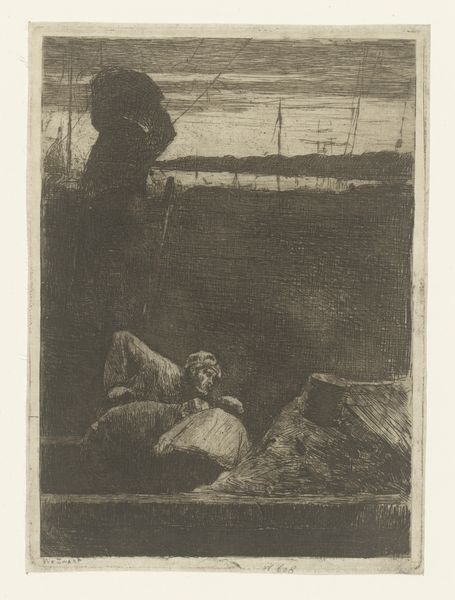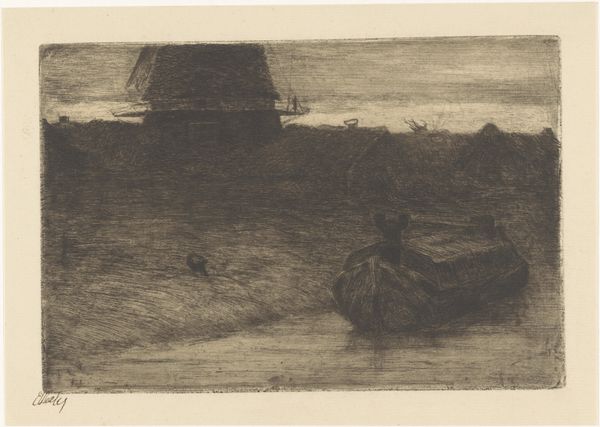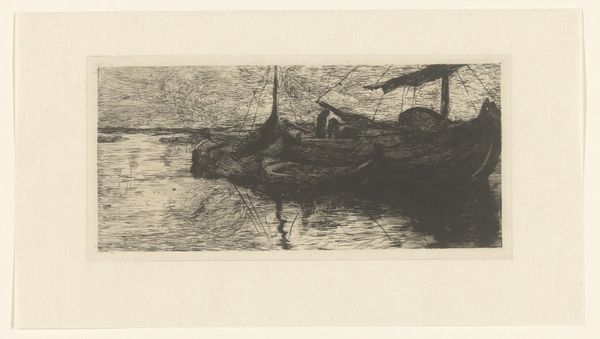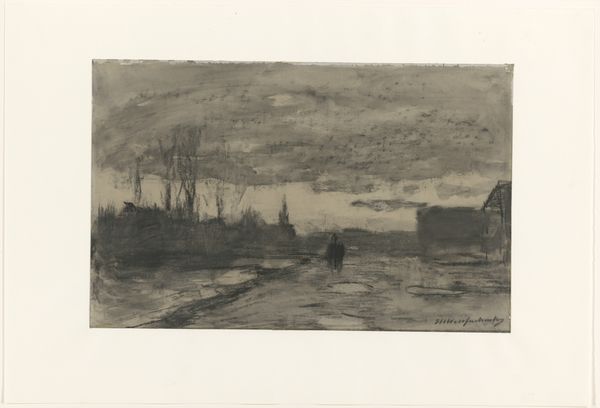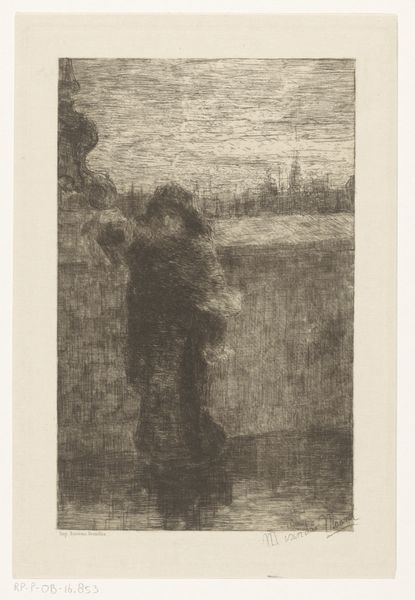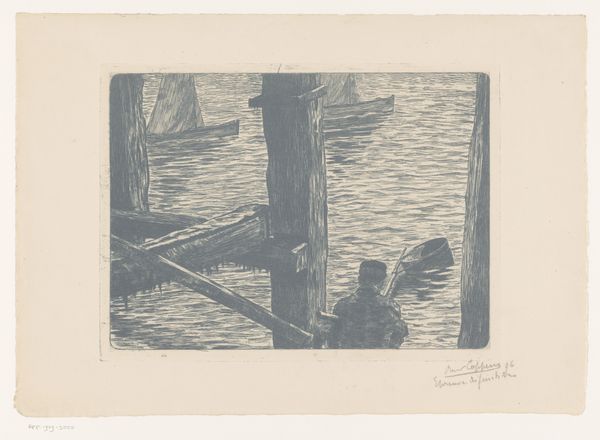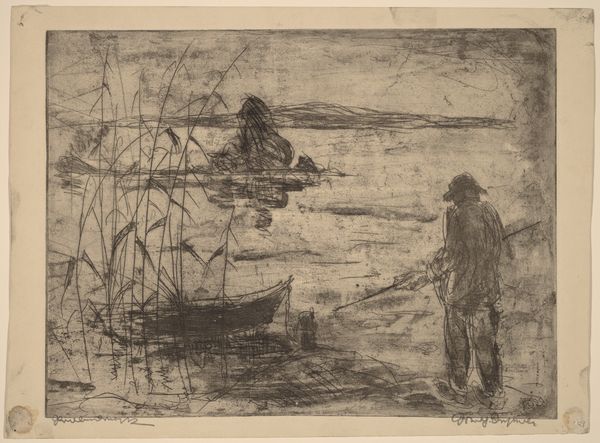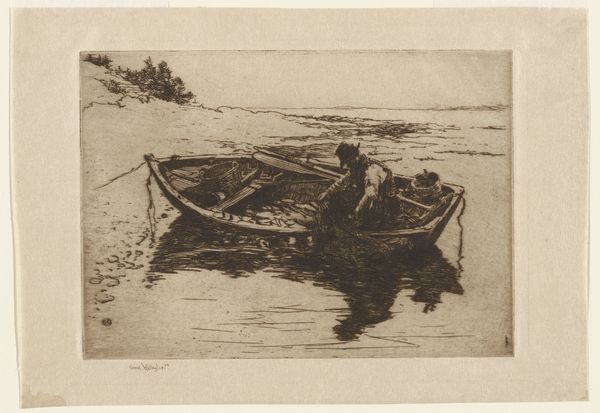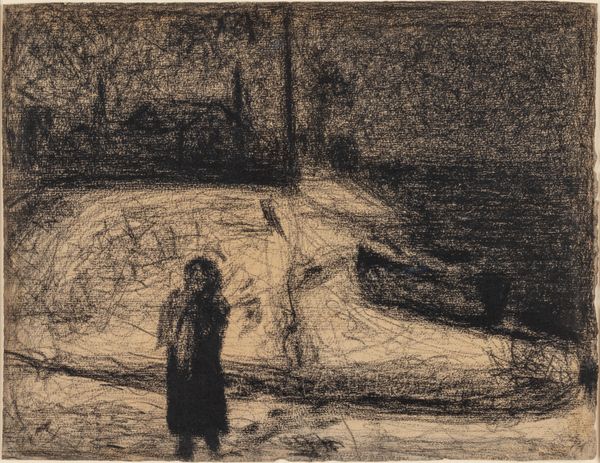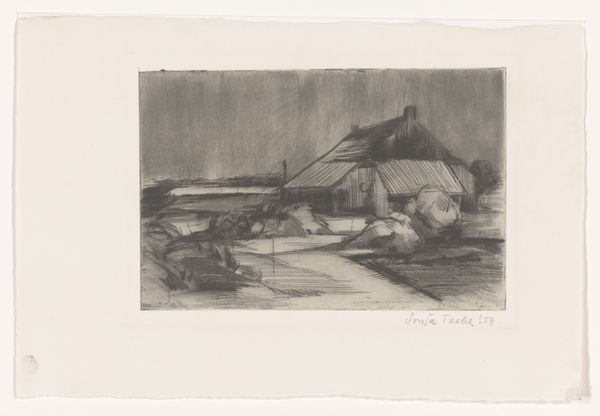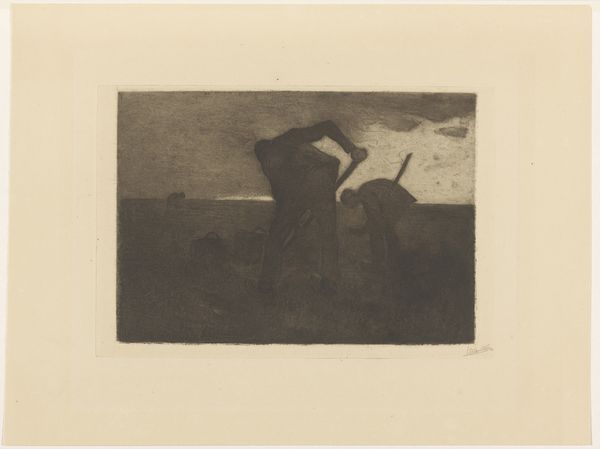
print, etching
#
dutch-golden-age
# print
#
etching
#
landscape
#
figuration
#
realism
Dimensions: height 173 mm, width 220 mm
Copyright: Rijks Museum: Open Domain
Editor: Here we have Willem de Zwart’s etching, “Man aan de kade van een haven,” created around 1886. The greyscale is heavy, and it makes me think of a foggy, cold morning at the docks. The figure seems almost swallowed by the scene's gloom. What do you see in this piece? Curator: It's like stepping back in time, isn’t it? The way de Zwart uses the etching technique, those dense lines, almost mimics the gritty reality of a harbour town. I’m drawn to the solitary figure – are they working? Waiting? Perhaps dreaming of a faraway voyage? Does it remind you of those old Dutch master paintings? Editor: I see what you mean, a bit like a Rembrandt sketch but...rougher somehow. Almost like you can feel the dampness in the air and hear the creaking of the boats. Do you think the roughness was on purpose? Curator: Oh, absolutely. It’s a conscious choice. It’s not about idealising; it’s about capturing a feeling, an atmosphere. Think of the lives connected to that harbour; each mark and scratch on the plate tell some story, reflecting both the beauty and the hard labour of people’s existence. Do you find any connection to the golden age despite its raw quality? Editor: I think the composition maybe? How the boats fill the background, while the figure in the foreground feels central, similar to some landscapes I've seen. It does carry a kind of quiet grandeur despite its rough details. Curator: Yes, there's a link there. Despite the subject’s seeming ordinary nature, there’s something poetic about it. Makes me think how an image made from rough lines can make us see beauty in everyday life, finding a shared experience over time. Editor: Definitely, I get that now, I think I might appreciate a cold misty day at the harbour next time I see one. Curator: Precisely. It's an echo, and now it’s our own.
Comments
No comments
Be the first to comment and join the conversation on the ultimate creative platform.
